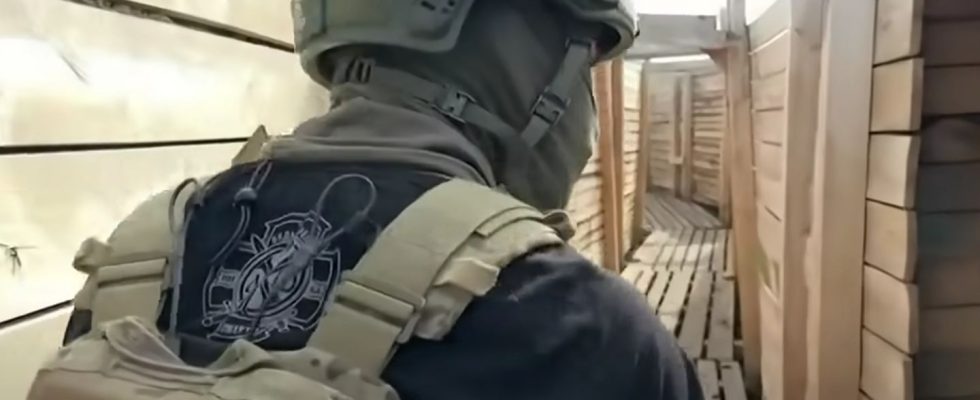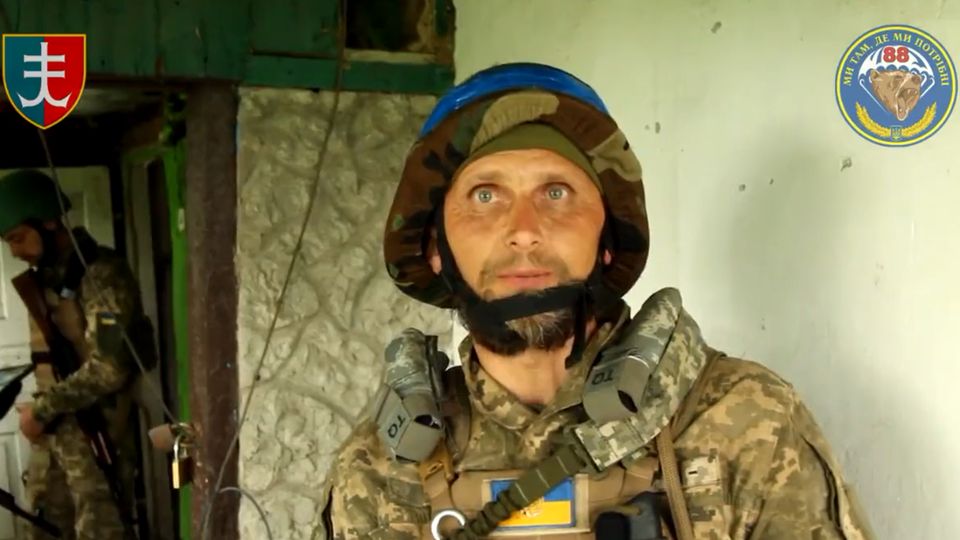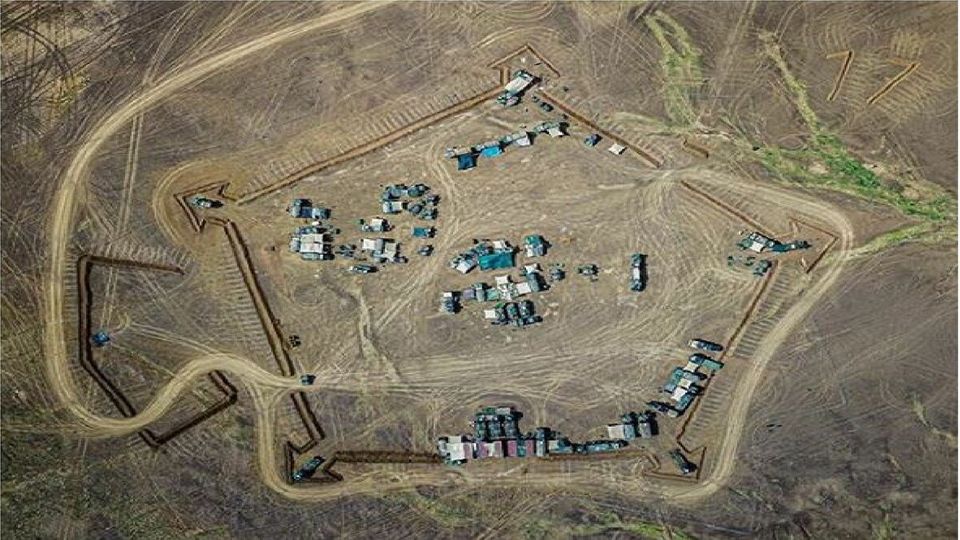war in Ukraine
Putin’s fortress – French TV crew allowed to film a Russian position for the first time
© TF1 Youtube / PR
The Ukrainian armed forces are seeking the decisive factor in a major summer offensive. The Russian defenses are causing them problems. French journalists were allowed to visit a position near the front.
The video “Dans les trenchees avec les soldats russes” is less than three minutes long. But its explosive power is great. The neutral tone was not well received in the Ukraine, especially since it is a contribution from the major French broadcaster TF1 and not a freelancer’s individual project. The French camera team visited Russian positions.
The way to the front goes past military vehicles, rubble and the first roadblocks. Then the position or what you can see of it. The trenches are professionally built. About 2.5 meters deep, paneled with wood and provided with a slatted frame on the floor so that the soldiers do not have to stand in the mud. The whole fields are said to be pervaded by them. At first glance, these systems resemble those of the First World War. In fact, they work differently. These trenches are never filled with teams, they only connect individual positions. You could say there are more trenches than soldiers.
Well developed positioning system
According to the New York Times, Ukrainian soldiers complain that the Russian trenches are better built than their own. Russian bunkers resemble “Vietnamese-style insect burrows” and are “so deep that they cannot be detected by drones.” During the Vietnam War, the Vietnamese built entire tunnel and cave systems to protect themselves from the US Air Force driven down like a mine in several levels.
In principle, the French journalists’ visit is also a means of information warfare. Showing a model position is certainly intended to discourage Western audiences. The enemy is only about a kilometer away from the Russians. The facility is not a “fortress” of one of the main Russian defense lines, but “only” an outpost position. A fortification like the one the Ukrainian armed forces are currently fighting through.
Deep shelters adjoin the ditches on the sides. The force is made up of reservists who have been mobilized over the last year. They demonstrate an automated grenade launcher to the team, which they occasionally fire at the Ukrainians. A soldier says: “This front has been under construction for six months. We are not fools. We are watching the Ukrainians closely. If they move, our artillery will hit.” The Russian defenses are built in layers, up to five lines are staggered in a row.
drone workshop
Then it goes into the drone workshop of the position. A specialist works here, a volunteer, not a mobilized person. His helmet is adorned with a graphic of a quadcopter – in the typical orange, the color of the ribbon of St. George. The specialist uses the same civilian quadcopters as the other side. But the days of simply dropping hand grenades are over. Industrially manufactured loads are lying around by the crate. “The Ukrainians were ahead of us, but we’ve been catching up quickly for the past six months.” The white cups are likely to contain charges with splinters and explosives. They are effective against “soft targets” – people and unarmored vehicles.
“So this drone is just a toy,” says the soldier. Then he holds the armor-piercing warhead under them. “But I can also use it to destroy a tank if the shell is placed correctly.”
No deep dips so far
The first two weeks of the Ukrainian counter-offensive show how difficult it is to take these positions. Kiev has so far been able to take some places on the immediate front line, such as Pjatychatky and some settlements in the Vremevka salient. “They had months to come up with a defense plan, they dug in and used the site, they sat there for six months laying little traps and mines,” Dara Massicot, military expert at Rand Corp, told the Washington Times “. The intellectual “architect” of the facilities is said to be General Surovikin. “There are so many minefields in front of the positions and many kilometers away from them, on the roads, in the fields, and it’s really difficult,” Massicot said. “And much of the Ukrainian breaching equipment has already been destroyed, so trying to penetrate all those minefields is a real challenge.”




